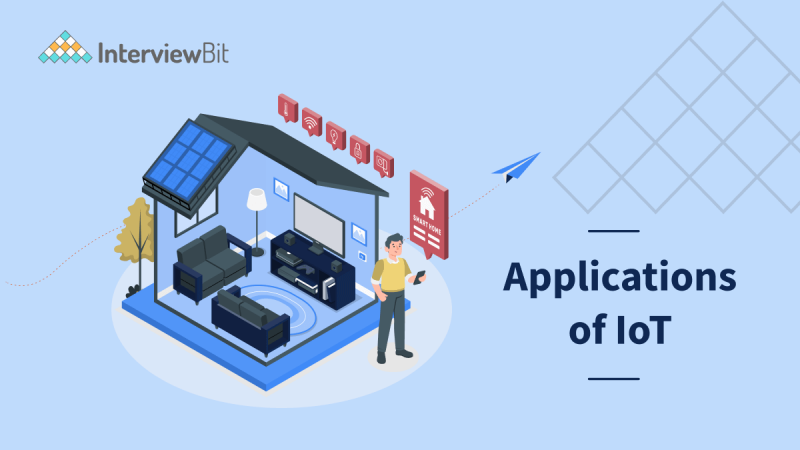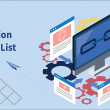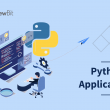- Introduction to IoT
- What is IoT?
- Benefits of IoT
- Top Applications of IoT in 2023
- 1. Smart Home
- 2. Wearables
- 3. Smart Cities
- 5. Smart Grid
- 6. Industrial IoT (IIoT)
- 7. Connected Cars
- 8. Healthcare Sector
- 9. Smart Retail
- 10. Smart Supply Chain
- 11. Agriculture/Farming
- Conclusion
- FAQs
- Q.1: What is an example of an IoT application?
- Q.2: Is Alexa an IoT?
- Q.3: What are sensors in IoT?
- Q.4 What are the 6 levels of IoT?
- Additional Resources
Introduction to IoT
In recent years, Internet of Things (IoT) devices have become a regular part of many people’s lives. No one goes without hearing about it. In many cases, it’s used together with superlatives to describe how it’ll revolutionize the way you live, work, and play. The question still remains, though: is it another buzzword or is it technology’s holy grail?

The Internet of Things (IoT) is more than a concept – it’s a method for planning, implementing, and utilizing technology in order to achieve a whole slew of benefits. In today’s digital world, IoT applications are transforming computing capabilities. Through the Internet of Things, the physical world can be integrated directly into computerized systems, leading to improvements in efficiency, economic benefits, and reduced human effort. Smart cities, smart homes, smart farms, healthcare, manufacturing, retail, energy, etc., are being sparked by IoT technology and are only a few of the many categorical examples of how IoT is already revolutionizing industries.
You all probably have heard of the “Internet of Things” or IoT, and you probably use IoT devices regularly, but what is the IoT exactly? Let’s break this down.
Confused about your next job?
What is IoT?
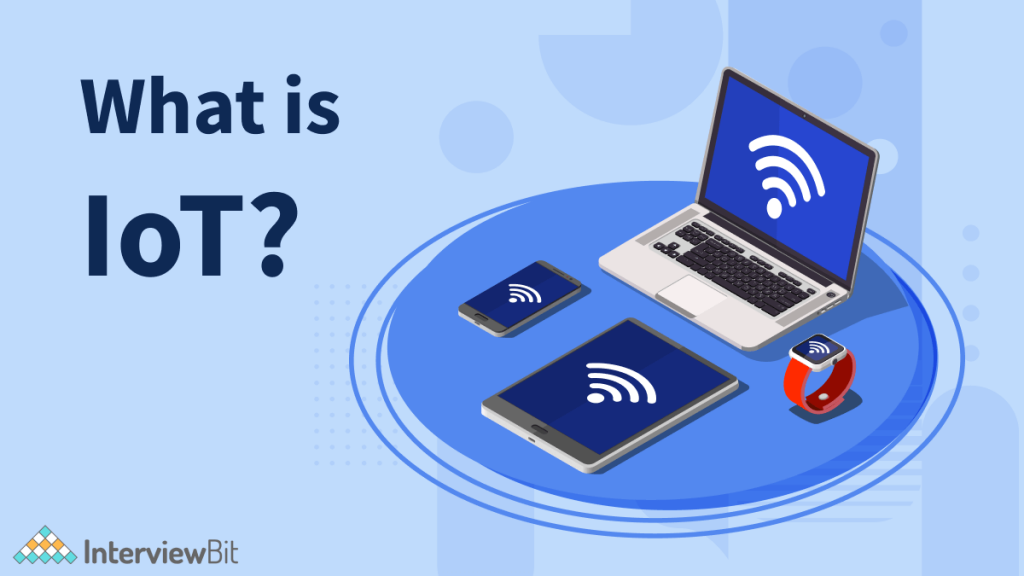
The internet of things, or IoT, is essentially a system that allows many embedded devices (such as car sensors, wearables, etc.) to connect, collect, and exchange data with each other over the internet. With the collection of relevant data, IoT can interact with one another just as humans do. One can think of the IoT as a giant network of connected devices. In IoT, “things” can be referred to as connected medical devices, biochip transponders (imagine livestock), solar panels, connected automobiles equipped with sensors to determine fuel pressure, tire pressure, or other issues, or anything with a sensor that can collect and transmit data via the internet.
IoT aims to extend internet connectivity from standard devices, such as computers and smartphones, to relatively dumb ones, such as toasters. By leveraging data collection, AI (Artificial Intelligence) algorithms, and networking, IoT makes virtually everything “smart.” If IoT data is utilized properly, it can streamline business processes, increase efficiency, improve health and safety, automate tasks, and allow us to gain a deeper understanding of our environments, relationships, and systems. We can track almost any aspect of what we do with sensors and real-time data acquisition and analysis. An IoT device includes sensors, actuators, and processors, all of which involve hardware board design, software systems, web APIs, and protocols forming a network of embedded systems.
Benefits of IoT
IoT has numerous benefits and perks that can make the lives of businesses and consumers easier. Voicing a few of them:
- Having access to the internet of things allows people to work smarter, live smarter, and better manage their lives.
- Aside from automating the home, IoT is critical to business. Using IoT data analytics, companies can gain deep insights into everything from the performance of machines to supply chain and logistics operations in real-time.
- By automating tasks, businesses can provide better services to their clients while lessening the need for human involvement.
- It also improves service delivery, which makes manufacturing and delivering goods less expensive.
- As a result of IoT, companies are forced to rethink how they run their business and to better formulate their strategies.
- Streamlines communication between electronic devices.
- A traditional data collection system has its limitations and is designed for passive usage, whereas an IoT system enables immediate action on data.
- With IoT, you can detect problems and improve processes to enhance customer experience.
- Through IoT, the access control system is capable of providing additional security to an organization and the general public. Incorporating IoT into surveillance can help to increase security in an organization and find any suspicious activity.
The Internet of Things could be the next frontier in the race for its share of the wallet with its wireless networks, superior sensors, and revolutionary computing capabilities. In the near future, IoT applications will provide connectivity and intelligence to billions of everyday objects.
Here are a few applications of how IoT is taking over our lives, and how companies are preparing to blow you away with smart devices using IoT.
Top Applications of IoT in 2023
The Internet of Things, combined with other technological disruptions like 5G, automation, and machine learning, revolutionize the way we live and do business. In that vein, let’s look closer at IoT and some of the practical real-world IoT applications already making a positive impact today.
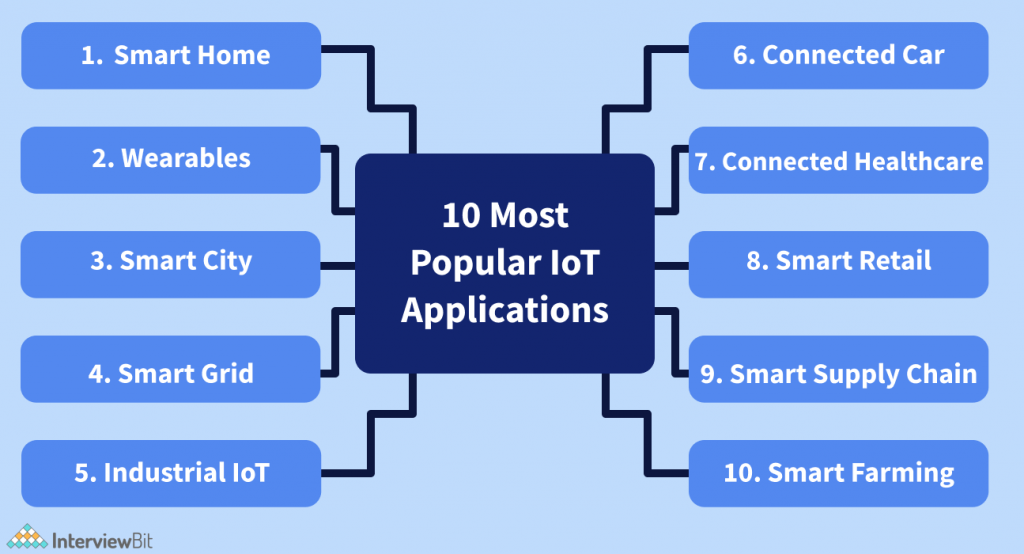
1. Smart Home
‘Smart Home’ is Google’s most searched IoT feature at present, with IoT creating the buzz. However, what does the word “Smart Home” mean? How nice it would be if you could turn the air conditioning on before you reached home or turn off the lights after you left? Or while you are away, let friends into your home for temporary access.
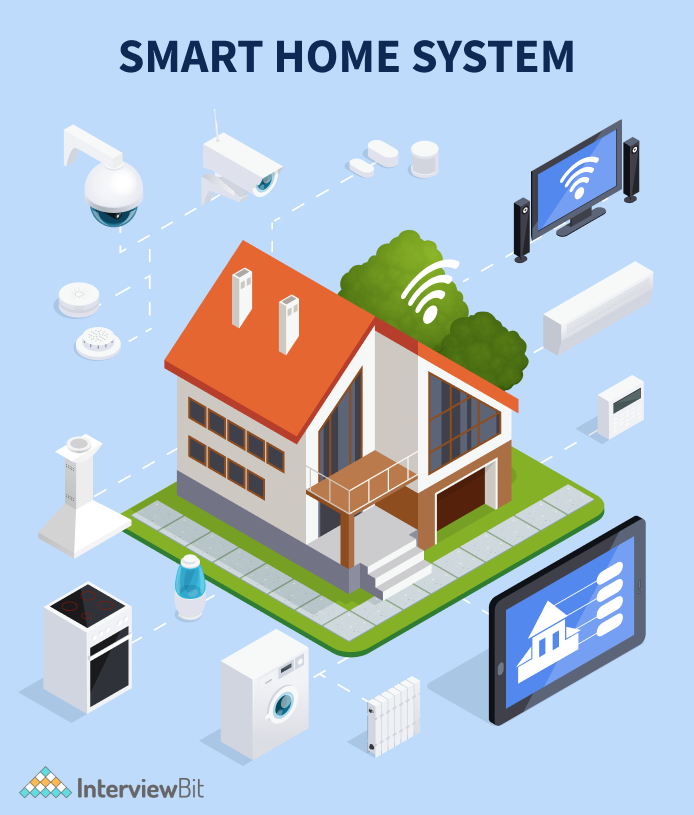
Don’t be shocked, as IoT products are making your life easier and more convenient. Smart homes are creating a revolution in the residential space and are expected to become as common as smartphones. They are being touted as practical, efficient, and cost-effective. An example is smart thermostats that can monitor and control the temperature in a home according to the owner’s comfort. Moreover, there is smart lighting, which can adjust itself according to user preferences as well as external ambient lighting.
2. Wearables
In the IoT world, wearable technology is a hallmark, and probably one of the earliest applications of IoT. We have now become accustomed to wearing wearable devices, for example, virtual glasses, fitness bands that measure heartbeats and calories, GPS tracking belts, and smartwatches, among others.
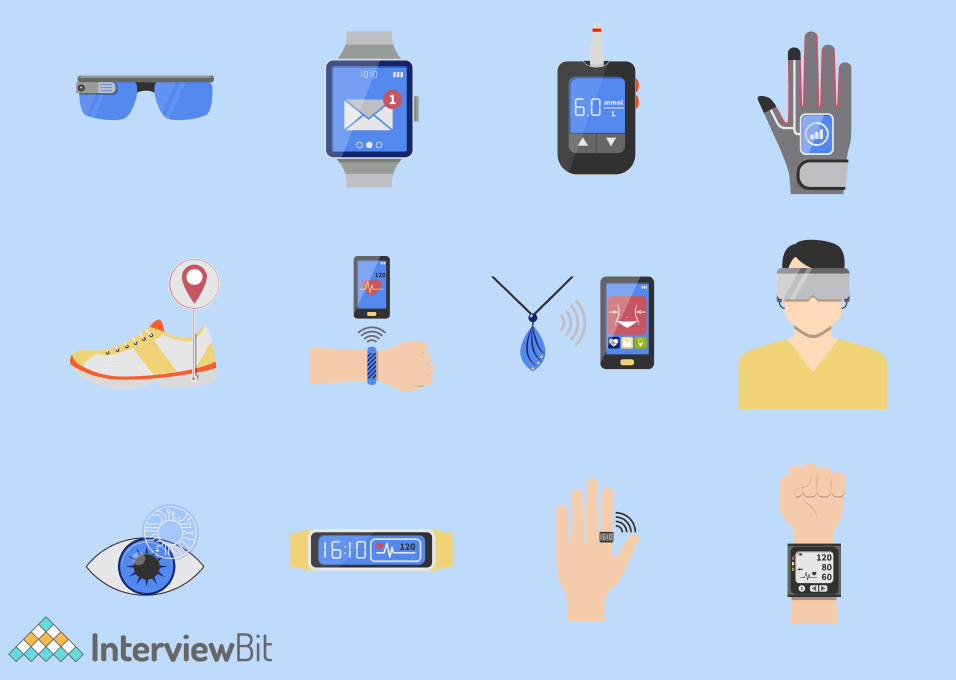
Basically, these are energy-efficient, small, and compact devices that contain sensors, hardware for readings, measurements, and software to collect and organize data about users. Today, wearable devices can display calls, texts, and social media updates in addition to tracking health and fitness.
3. Smart Cities
Many of you are probably familiar with the term Smart City. IoT applications such as smart cities generate a lot of buzz among the world’s population. An optimized traffic system is one of the many aspects of a smart city. Smart cities use the internet of things in many ways, such as smart surveillance, automated transportation, smart street lighting, smart energy management, water management, waste management, urban security, and environmental monitoring, etc.
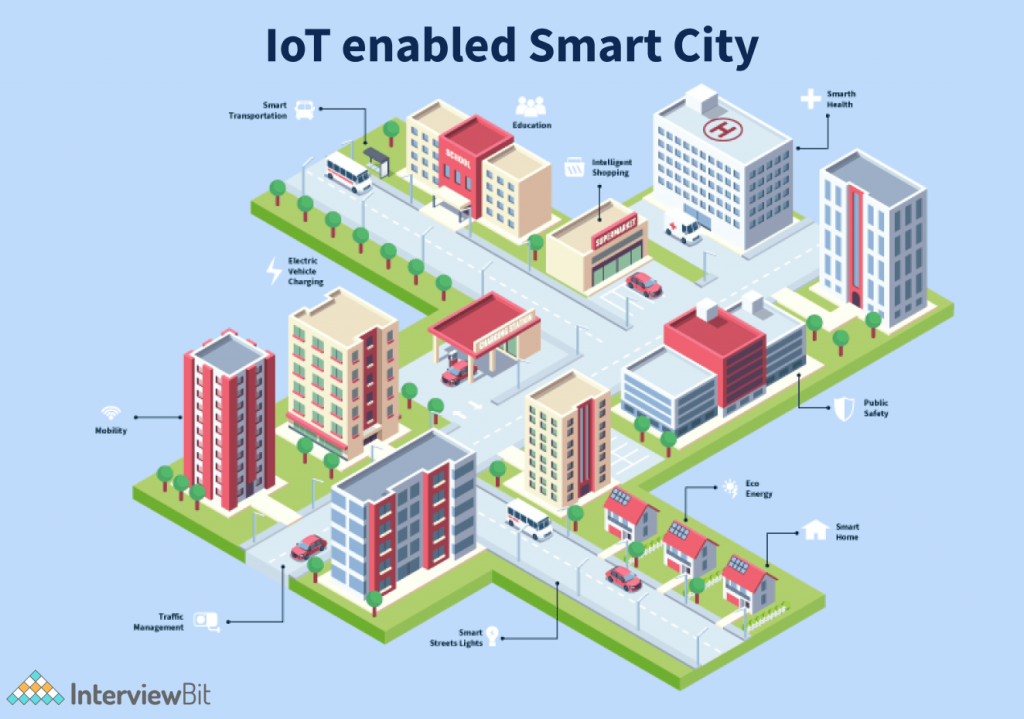
Urban dwellers will find IoT helpful in solving major problems like pollution, traffic congestion, and energy shortages. A smart parking system can be the first step in becoming a smart city. Besides solving many parking-related issues, it notifies users when parking time is up and when spaces become available. Additionally, the sensors can catch meter tampering, general malfunctions, and any issues with the electricity system.
5. Smart Grid
There are many large-scale civil IoT applications, but the smart grid has become the most significant one. With the help of IoT technologies, smart grids can provide robust and efficient energy management solutions that are lacking in current models/frameworks. Installing “smart” electricity meters with built-in sensors and IoT functionality can make it easier to monitor and control the flow of electricity, from industrial power stations to communal city blocks. In a smart grid, energy spikes and equipment failure can be detected, power outages can be prevented, and power can be routed more quickly to those in need.
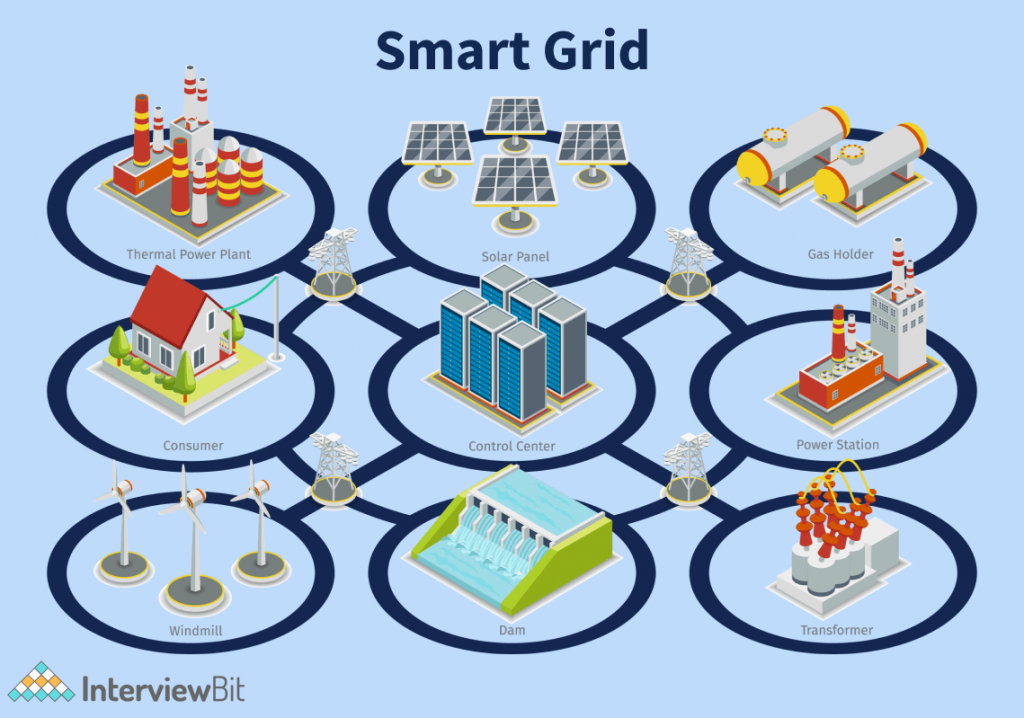
In addition, the system provides the end-user with valuable information about their consumption patterns and how they can reduce or adjust their energy expenses. It is important to establish bi-directional communication between service providers and end-users to allow for the exchange of valuable information for the detection of faults, decision-making, and the repair of equipment.
6. Industrial IoT (IIoT)
Industry Internet, also called Industrial Internet of Things ( IIoT ), is the new buzz in the industrial sector and has emerged as the top IoT application area. What can IoT do for industries? Automation and machine learning, combined with IoT, help organizations reduce operating costs and increase productivity and efficiency. With IoT, one can even redesign products and packaging to provide better performance both in cost and customer satisfaction.
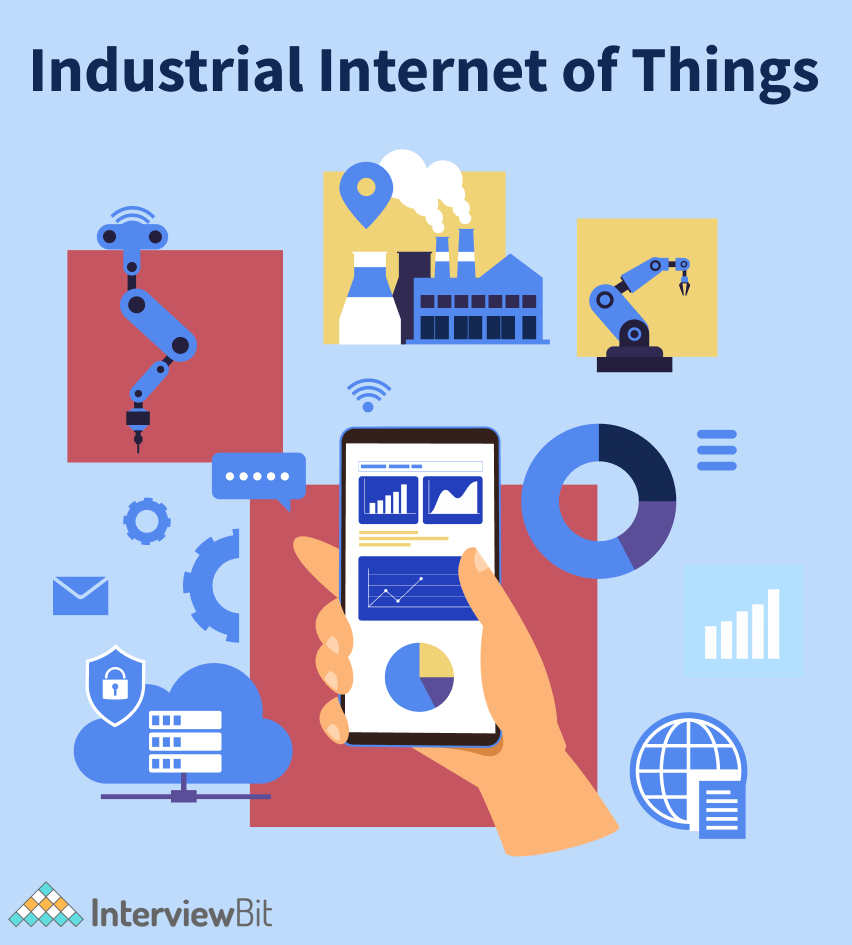
As a game-changer, the Internet of Things offers solutions to all categories of its arsenal, including Factory Digitalization, Product Flow Monitoring, Inventory Management, Manufacturing, Industrial processes, Safety and Security, Quality Control, Quality Analysis, Packaging Optimization, Logistics, Supply Chain Management, etc. In the manufacturing sector, IoT can be used to monitor the efficiency of the systems, spot any errors in the machinery, and detect causes of inefficiency, etc. Unplanned downtime can also be dealt with by IoT in the industry.
7. Connected Cars
With IoT technology developing rapidly, the automobile industry has undergone a radical transformation. Several dynamic changes have been brought about to the automobile due to its implementation, including improved safety, comfort, and luxury. The connected car gives a person the same connection, entertainment, and network that they have at their office, home, or at the entertainment center. IoT sensors embedded on the surface of vehicles further prevent accidents and facilitate a safe and smooth drive. AI (Artificial Integration) is integrated into connected cars to provide real-time alerts to drivers of dangers such as lane departure, forward collisions, and driving conditions.
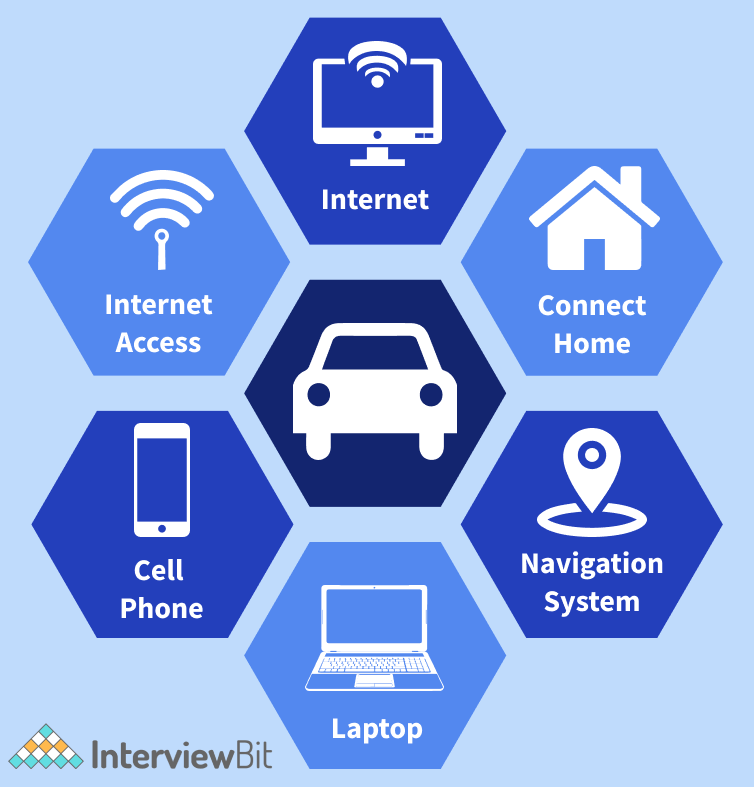
Almost all large automakers are developing connected car solutions, as well as a few brave startups. Apple, Tesla, BMW, and Google are just a few of the major brands now working on the next revolution in automobiles. In-car entertainment, advanced navigation, maintenance features, telematics, fuel efficiency, and fleet management are just a few of the benefits that can be provided by this technology to the user.
8. Healthcare Sector
As a whole, the use of IoT in healthcare can positively influence the sector. IoT can be a valuable tool for physicians, patients, hospitals, and health insurance companies, all of whom are included in the healthcare industry.
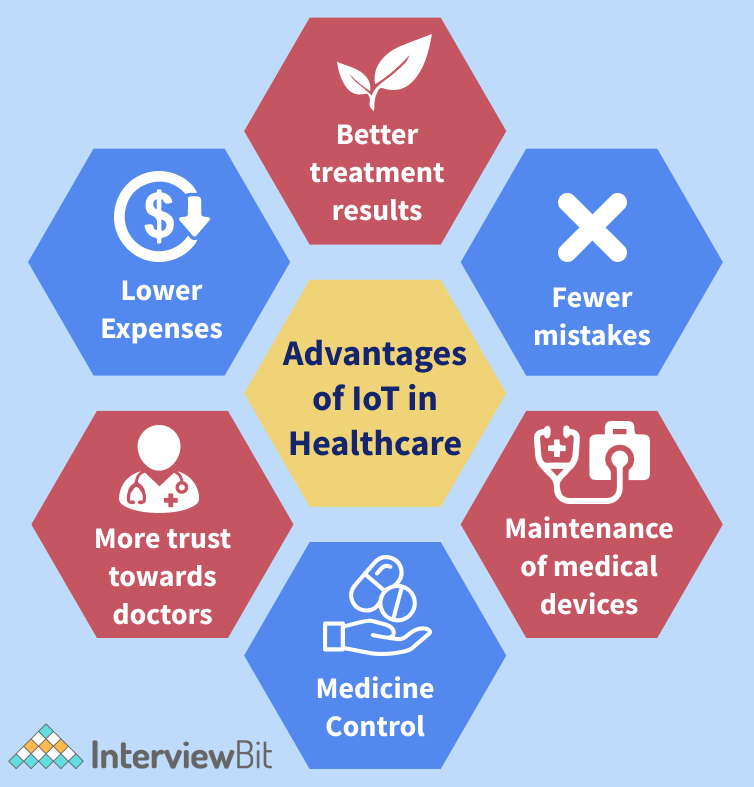
The health of patients can already be enhanced and improved by wearables such as fitness bands and blood pressure monitors. Fitness bands and blood pressure monitors are just two of the wearable devices patients can use to improve their health. IoT devices provide doctors with continuous monitoring of metrics and automated alerts for vital signs, enabling them to provide better care to high-risk patients. The IoT device also makes it easy for physicians to look up the patient’s history and access real-time health information. Even cancerous cells can be monitored using nanotechnology-based IoT solutions. Smart beds with special sensors to observe vital signs, blood pressure, oximeters and body temperature are another use of IoT technology. Hospitals can use IoT devices to track medical devices such as defibrillators and wheelchairs. They can also use them to manage inventory, monitor the environment, and regulate the temperature.
9. Smart Retail
Customers get a whole new shopping experience with IoT applications in retail. For retailers, IoT opens up new ways to connect with customers and enhance in-store experiences. Using IoT applications, in-store checkout can be done quickly and efficiently. The checkout system using RFID (Radio Frequency Identification) reads tags on products and deducts the total amount from a customer’s application, thus saving the customer time and frustration of having to wait in long lines.
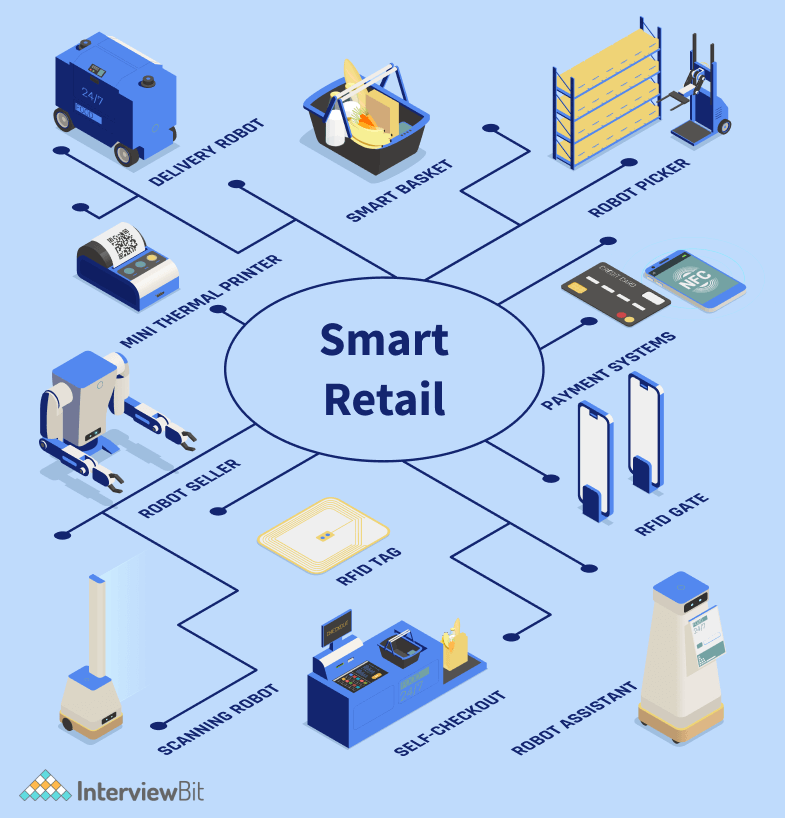
Retailers can stay connected to their customers even when they are not in the store by using smartphones. Utilizing beacon technology and smartphones can help retailers better serve their customers.
10. Smart Supply Chain
If you use Amazon or Swiggy, you are probably aware of their tracking system. IoT applications are widely used in supply chains. By using a rating system, suppliers have been able to monitor goods in transit and receive immediate feedback from customers.
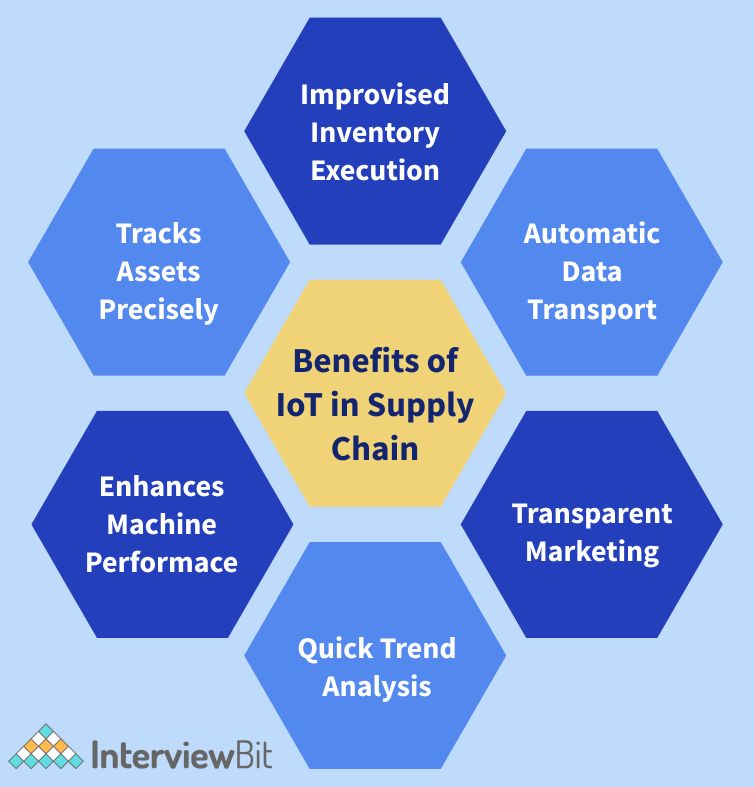
IoT systems can also provide information about the temperature and pressure at which items are being preserved, thus helping the supplier or driver maintain the goods during transit. The system also allows clients to see the real-time status and a detailed view of the supply network.
11. Agriculture/Farming
We usually do not consider farming and cutting-edge technology in the same light. Farmers, though, are already utilizing these technologies to gain unprecedented access to data and the power to make decisions. IoT enables farmers to reduce waste and boost productivity. The IoT devices give farmers access to detailed information about their soil conditions, which is essential to growing healthy crops.
The characteristics of soil such as its moisture, acidity, nutrient concentration, temperature, and so on can assist farmers in planning irrigation, ensuring efficient water use, determining the best time to plant, and even diagnosing soil and plant diseases. Data about short-term weather and climate can also be gathered and analyzed using similar devices. Moreover, IoT devices can be beneficial to farmers by allowing them to track fleets, manage inventories, observe fields, and even monitor livestock. There are several ways farmers can get the work done without hiring additional workers, including driverless tractors, smart irrigation and fertilizing systems, smart spraying systems, vertical farming software, and AI-based robots for harvesting.
Conclusion
The Internet of Things will be even more fascinating in the future when billions of things can communicate with one another without human intervention. IoT could bring a paradigm shift in how we live and work. The diverse applications of IoT Technology are due to its inherent ability to adapt to nearly any technology that can provide relevant information about its operations, about the performance of an activity, or even about the environmental conditions that can be monitored and controlled. These days, companies of all types and sizes are using this technology to streamline, automate, improve and control various processes.
We are grateful that you took the time to read about all these fascinating IoT applications. IoT is having a profound effect on many other aspects of daily life. Therefore, now is the right time to explore the full potential of this technology. Because with IoT, the future has already begun!
FAQs
Q.1: What is an example of an IoT application?
Ans. An example of IoT applications includes a smart home (a home equipped with connected thermostats, appliances, lighting, smart security systems, heating, electronic devices, etc., that can be controlled remotely via computers and smartphones).
Q.2: Is Alexa an IoT?
Ans: Yes, Alexa is an IoT device. Since Alexa, Amazon’s voice assistant can control a wider range of smart home devices than Google Assistant and Siri, it is without a doubt one of the most comprehensive IoT solutions.
Q.3: What are sensors in IoT?
Ans: Sensors are devices that play a key role in the development of IoT solutions since they detect external information and convert it into a signal that humans and machines can understand.
Q.4 What are the 6 levels of IoT?
Ans. The 6 levels of IoT are as follows:
- Sounding Level
- Network Level
- Service Level
- Interface Level
- Scalability Level
- Cloud-based edge computing Level


